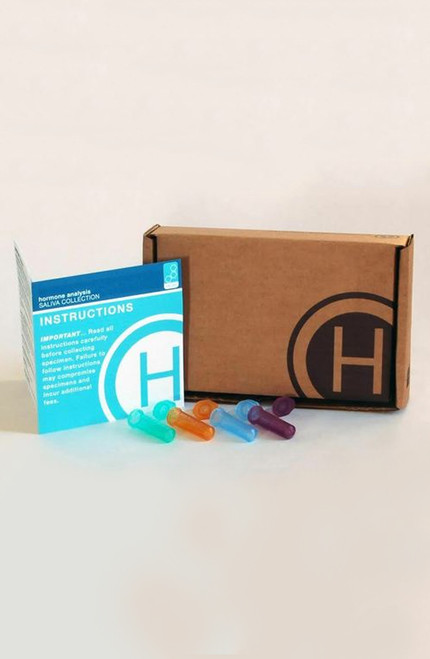Comprehensive Stool Test | Select Balance Products
The GI Effects® Comprehensive Stool Profile is an advanced stool test that provides immediate, actionable clinical information for the management of gastrointestinal health. Utilizing cutting-edge technologies and biomarkers, this test offers valuable insight into digestive function, intestinal inflammation, and the intestinal microbiome.
Genova Diagnostics is excited to announce the addition of polymerase chain reaction (PCR) for parasites to the GI Effects Profiles. PCR is a highly sensitive and specific methodology that detects an organism's DNA.
The GI Effects now includes 6 PCR targets that detect common protozoan parasites:
- Blastocystis spp. with reflex subtyping 1-9
- Cryptosporidium spp.
- Cyclospora cayetanensis
- Dientamoeba fragilis
- Entamoeba histolytica
- Giardia
The 6 PCR targets replace the 3 EIA biomarkers. The GI Effects upgrade also includes several report enhancements for ease of use.
The GI Effects Comprehensive Stool Profile Biomarkers
The biomarkers from the GI Effects Comprehensive Profile are reported using the DIG framework, providing key clinical information for three main gastrointestinal functional areas:
- Digestion/Absorption:
- Pancreatic Elastase-1 is a marker of exocrine pancreatic function.
- Products of Protein Breakdown are markers of undigested protein reaching the colon.
- Fecal Fat is a marker of fat breakdown and absorption.
- Inflammation/Immunology:
- Calprotectin is a marker of neutrophil-driven inflammation. Produced in abundance at sites of inflammation, this biomarker has been proven clinically useful in differentiating between Inflammatory Bowel Disease (IBD) and Irritable Bowel Syndrome (IBS).3,4
- Eosinophil Protein X is a marker of eosinophil-driven inflammation and allergic response.
- Fecal Secretory IgA is a marker of gut secretory immunity and barrier function.
- Gut Microbiome:
- Metabolic indicators, including short-chain fatty acids and beta-glucuronidase, demonstrate specific and vital metabolic functions performed by the microbiota.
- Commensal Bacteria demonstrate the composition and relative abundance of gut organisms.
- More than 95% of commensal gut organisms are anaerobic and are difficult to recover by traditional (aerobic) culture techniques.
- GI Effects assesses a set of 24 genera/species that map to 7 major phyla.
- Bacterial and mycology cultures demonstrate the presence of specific beneficial and pathological organisms.
- Bacterial and mycology sensitivities are provided for pathogenic or potentially pathogenic organisms that have been cultured. The report includes effective prescriptive and natural agents.
- Parasitology includes comprehensive testing for all parasites on every parasitology exam ordered.
- GI Effects provides microscopic fecal specimen examination for ova and parasites (O&P), the gold standard of diagnosis for many parasites.
- 6 Polymerase chain reaction (PCR) targets detect common protozoan parasites including Blastocystis spp. with reflex subtyping 1-9, Cryptosporidium spp., Cyclospora cayetanensis, Dientamoeba fragilis, Entamoeba histolytica, and Giardia. PCR for organisms is emerging as a highly sensitive method for infectious organism detection.
- Selection of a one-day or three-day sample collection is based on the clinician's clinical index of suspicion for parasitic infection. If there is no/low suspicion, a one-day sample will likely be adequate. For high suspicion, a three-day sample collection is optimal.
- Additional Biomarkers Available:
- Campylobacter
- Clostridium difficile
- Escherichia coli
- Fecal Lactoferrin
- Helicobacter pylori
- Macro Exam for Worms
- Zonulin Family Peptide
- KOH Preparation for Yeast
What Advantage Does the Profile Offer Compared to Other Diagnostics?
A structured fecal biomarker panel offers the advantage of assessing multiple functional areas that may be contributing to symptoms. For example, diarrhea could stem from multiple causes including pancreatic exocrine insufficiency, inflammation, food allergies, or the presence of a pathogenic or potentially pathogenic organism. A positive result on one or more fecal biomarker tests may guide therapy, either by suggesting a treatable alternative diagnosis or by eliminating a diagnosis from further consideration. The latter allows individualized targeted treatment to be redirected to more likely diagnoses.5,6
GI Effects® represents the best technical available to assess the gut microbiome, combining:
- 16S rRNA gene polymerase chain reaction (PCR) amplification technique for anaerobic commensal bacteria
- Matrix Assisted Laser Desorption Ionization Time-of-Flight Mass Spectrometry (MALDI-TOF MS) technology for bacterial and fungal species identification via culture
- Gold standard microscopic ova and parasite (O&P) detection
- Real-time PCR for the identification of 6 common parasites
- Next-Generation DNA sequencing for Blastocystis spp. with reflex subtyping 1-9
*** This test is to obtain your stool test results. If you'd like an apt. with Stephanie (ARNP, FNP-C) after your results are back, you can book a phone consult with her at that time.
*** Results typically take 20-30 business days.







